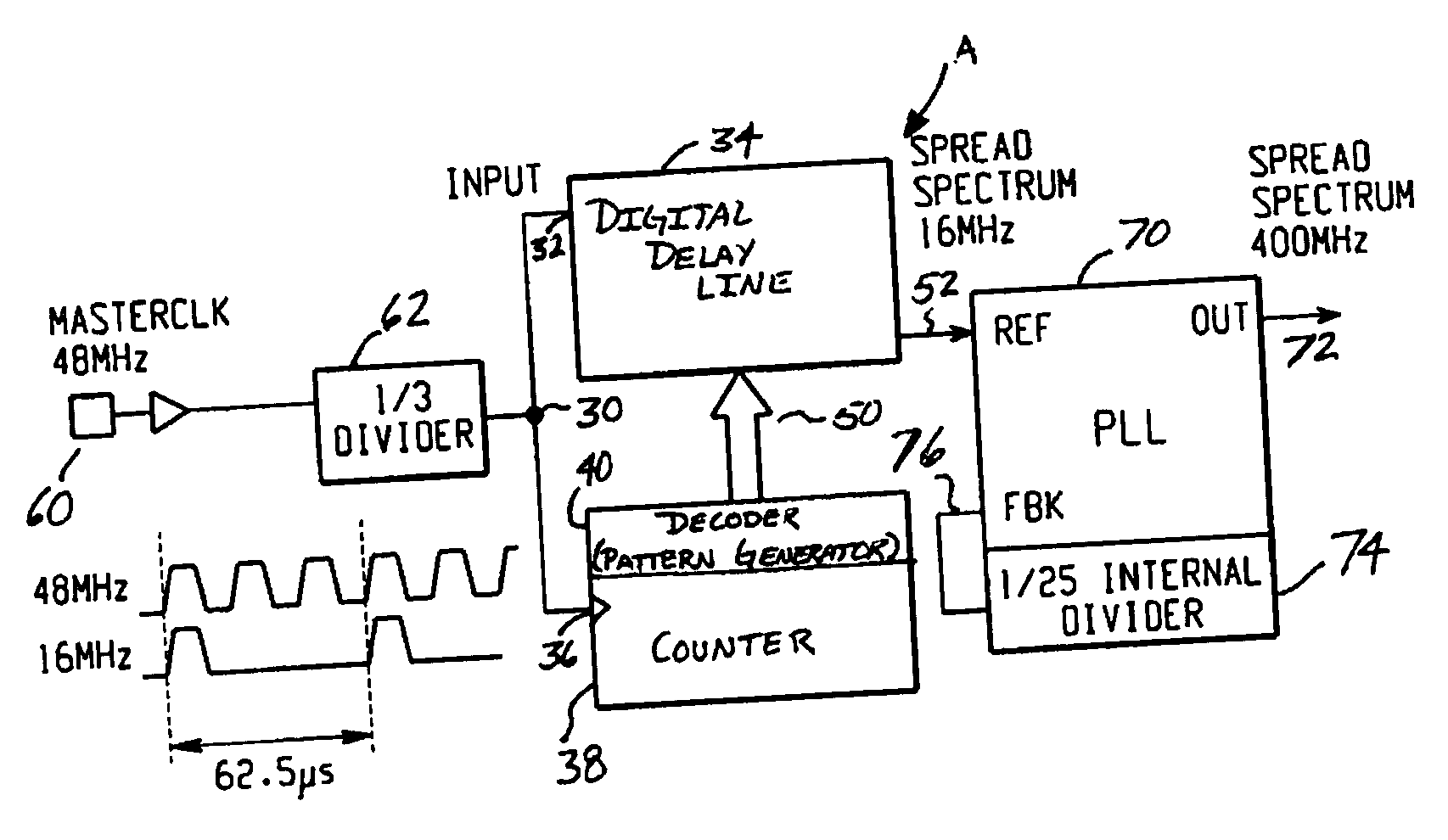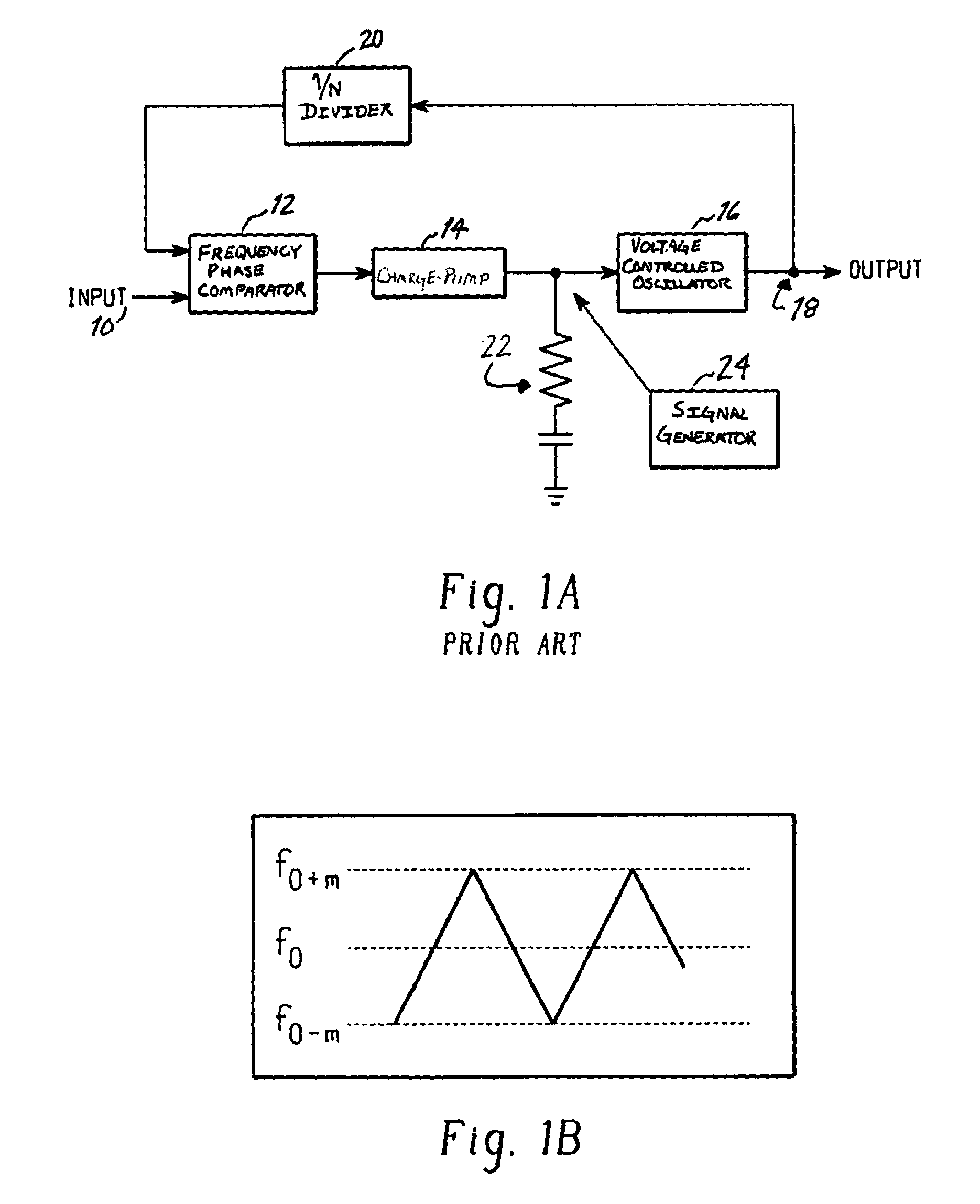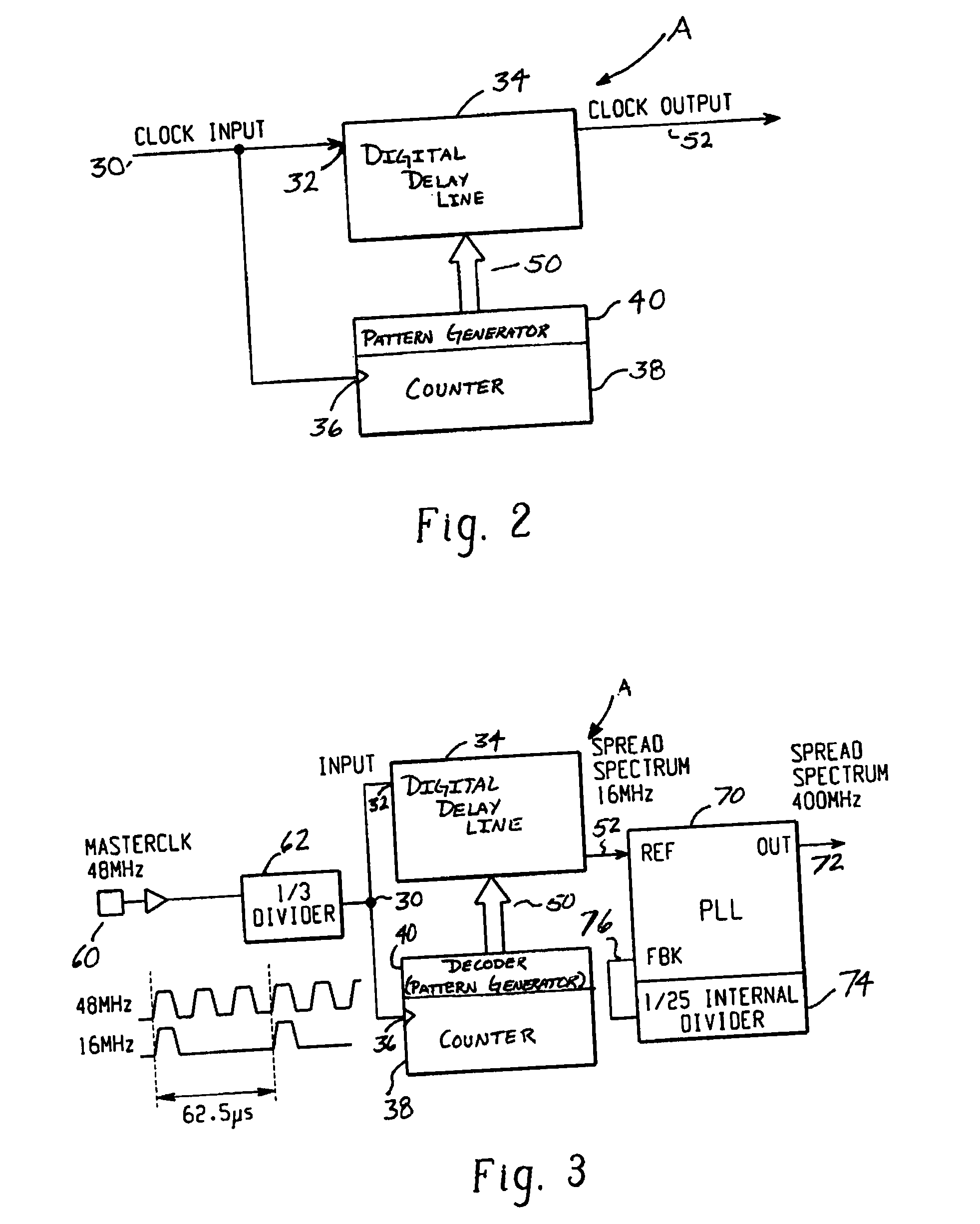Spread spectrum clock generator
a clock generator and spectrum spectrum technology, applied in the field of synchronous digital circuitry, can solve the problems of increasing the incidence of electromagnetic interference, data errors in associated data processing devices, and difficult and expensive to achieve sscg circuitry
- Summary
- Abstract
- Description
- Claims
- Application Information
AI Technical Summary
Problems solved by technology
Method used
Image
Examples
Embodiment Construction
[0017] Turning now to the drawings wherein the illustrations are for the purpose of illustrating the preferred embodiment only, and not for the purpose of delivering the same, FIG. 1A shows a block diagram of a conventional spread spectrum clock generator. In a conventional system, a clock input 10 was provided as one input to a frequency phase comparator 12. An output of the comparator 12 was provided to a charge pump 14, the output of which is provided to a voltage controlled oscillator (“VCO 16”). Output 18 of the VCO 16 forms a system clock output, as well as a feedback loop into frequency comparator 12 via a 1 / N divider 20.
[0018] A conventional spread spectrum clock generator employed an RC circuit 22 as a filter to ground. A signal generator 24 served to generate a waveform (such as that evidenced in FIG. 1B) into the input of the VCO 16. By injecting this signal into the VCO input, an output frequency at output 18 was modulated in conjunction with the waveform of FIG. 1B.
[0...
PUM
 Login to View More
Login to View More Abstract
Description
Claims
Application Information
 Login to View More
Login to View More - R&D
- Intellectual Property
- Life Sciences
- Materials
- Tech Scout
- Unparalleled Data Quality
- Higher Quality Content
- 60% Fewer Hallucinations
Browse by: Latest US Patents, China's latest patents, Technical Efficacy Thesaurus, Application Domain, Technology Topic, Popular Technical Reports.
© 2025 PatSnap. All rights reserved.Legal|Privacy policy|Modern Slavery Act Transparency Statement|Sitemap|About US| Contact US: help@patsnap.com



